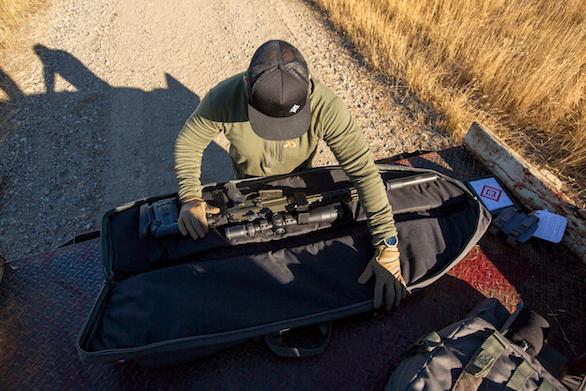Summertime Work: Prep For Fall Hunting with our 4-Step Process
August 6th, 2020 by BALLISTIC

Fall hunting seasons are coming up fast, and now is the time to get ready.
The smart hunter will use Ballisticand our 4-Step Process to ensure their summer shooting preparation is as efficient as possible.
STEP 1: Chronographing
At the shooting range, begin by chronographing the various hunting rounds to be used later in the year to true the rifle and calculate accurate muzzle velocity. Then use this data to start building a Ballistic Profile for each hunting round.
STEP 2: Zeroing
Next, the hunter needs to zero each round at 100 yards.
Once the 100-yard zero is established, it’s time to reach out further. If the shooting range has 200- and 300-yard and longer opportunities, practice at these distances. If the range is limited to 100-yard shots, find some wide-open land and set up targets at various distances.
The longer-distance practice will make a hunter familiar with the bullet drop and wind adjustments needed in the field, and Ballistic will provide those holdover and windage points.
STEP 3: Targets
Longer-distance shooting also lets the hunter see how targets look at various distances. Speaking of targets, investing in life-sized paper game targets can be a huge help, too. When these life-sized targets are arranged at various distances, hunters become familiar with how animals will appear at these distances through their optics.
STEP 4: Environmentals
Practice during windy days is also a must! That left-to-right breeze likely won’t make much difference for a 100-yard shot. However, many hunters are amazed to discover just how much bullet drift even a 5 M.P.H. breeze can create at 400-plus yards.
With Ballistic, shooters and hunters can input wind speed and direction in a manner of ways. Angle inputs (e.g., 90° = crosswind left to right) are possible for the wind direction or the O’clock format (e.g., 3:00 will automatically translate to 90°) can be used, too. Headwinds can also be added in, and Ballistic will automatically adjust velocity to account for the headwind calculation.
Working Ballistic into these practice sessions will pay big dividends when hunting. Just as they would in the fields during the season, hunters practicing for the fall should regularly update Ballistic’s environmental inputs, including wind speed and directions.
Summer prep with Ballistic can mean a fall full of hunting trophies!


Leave a Reply